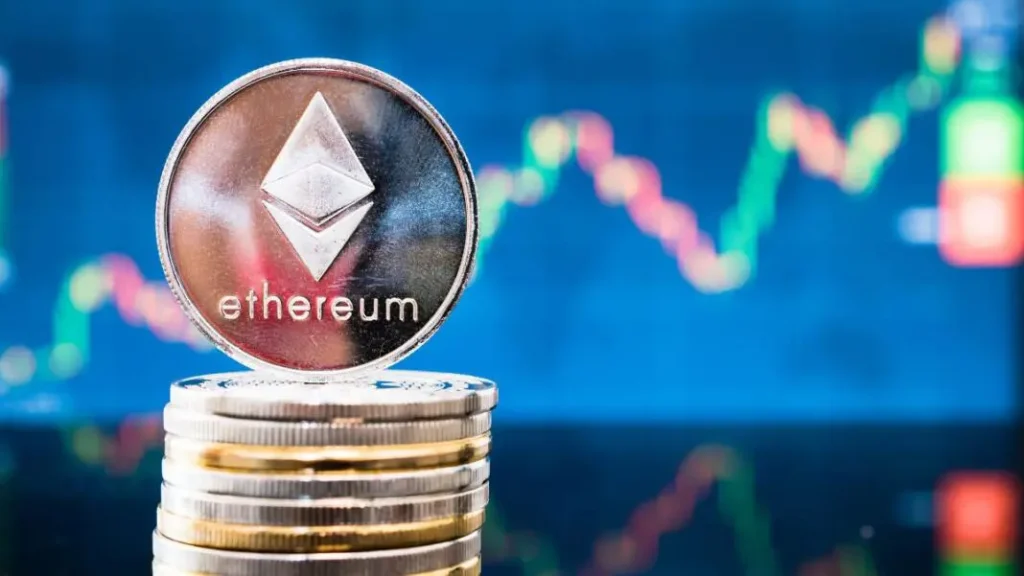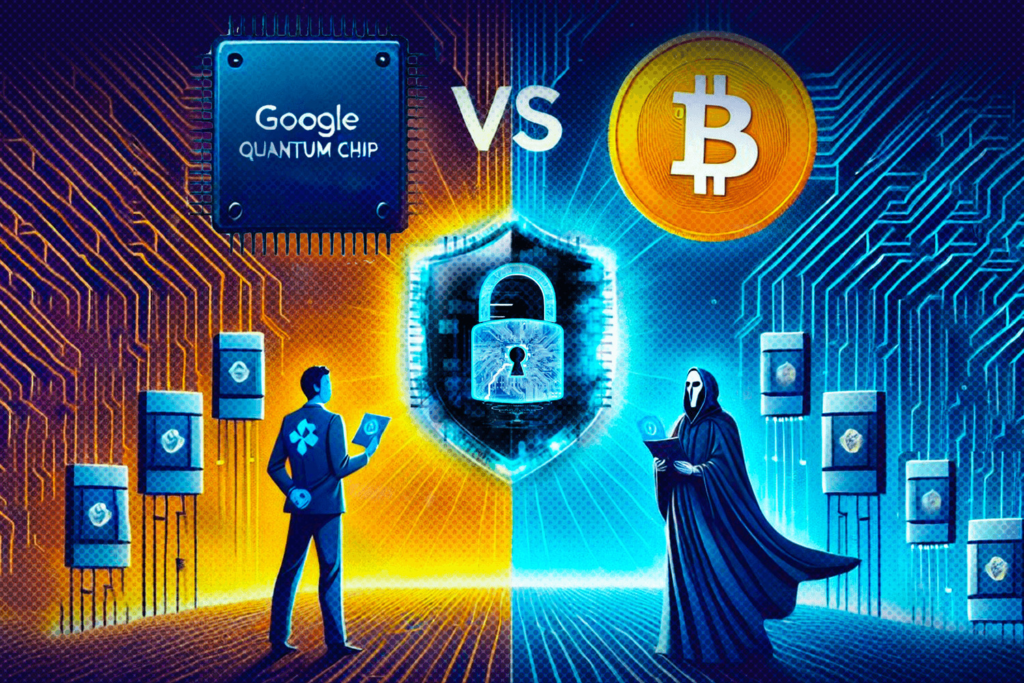Many believe that the NFT season is returning with strong community interest, but most users are drawn to NFTs because of airdrops. So, what is the way forward for NFT projects after an airdrop?
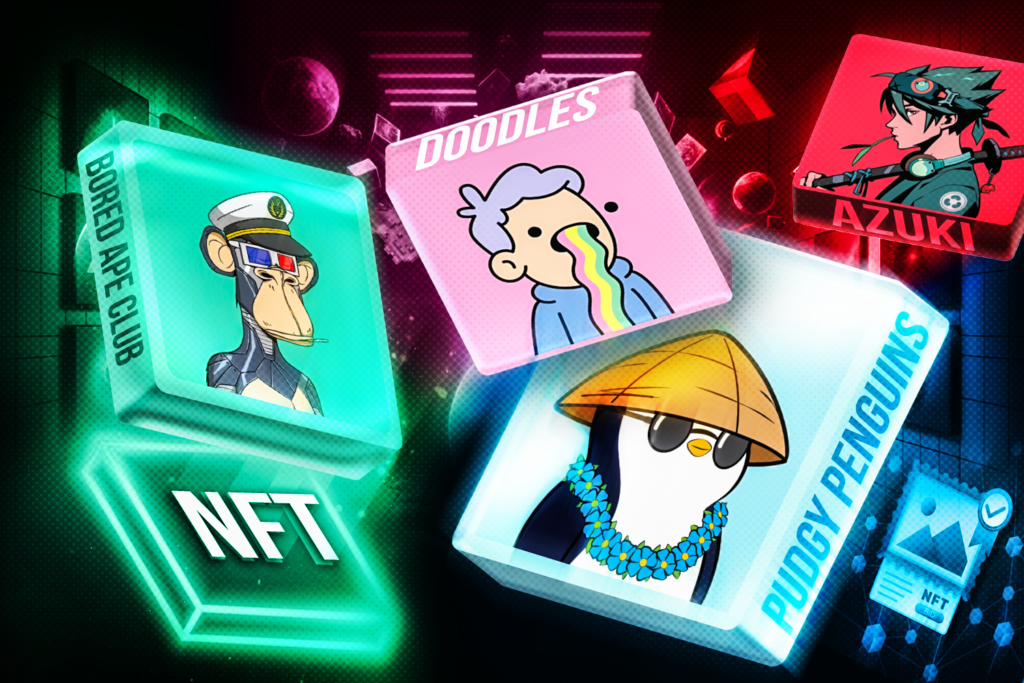
A New “Hero” Needed for the New NFT Season
The NFT market has just witnessed two top projects in the niche – Magic Eden and Pudgy Penguins – execute airdrops with a value of over hundreds of millions of dollars. Following this series of events, many large NFT projects have also begun hinting at launching tokens and conducting airdrops for their communities in the near future.
Rumors started with OpenSea – the leading NFT marketplace – as the project team proceeded to register a legal entity and open an X (formerly Twitter) account for the OpenSea Foundation. This is the same approach that Blur and Magic Eden took before launching their tokens. This move caused the price of OpenSea’s Genesis NFT collection to increase from 0.02 ETH to 0.08 ETH, and the project’s trading volume also increased by more than 15 times.
Furthermore, NFT collections worth thousands of dollars, such as Azuki and Doodles, have also hinted at and revealed plans to launch their own tokens, implying a high possibility of airdrops. This news, coupled with the effects of the uptrend season, has caused NFT prices to skyrocket.
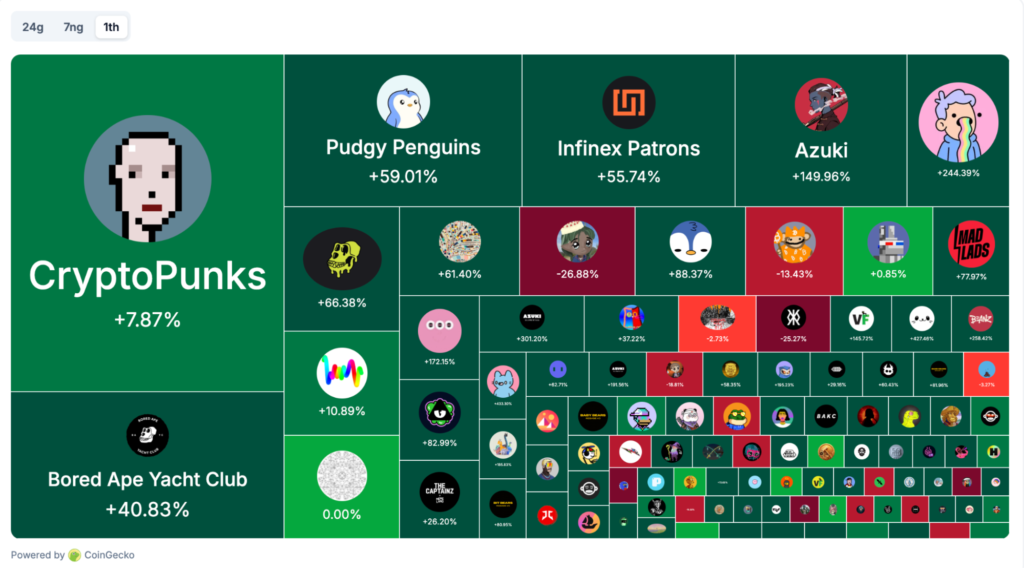
Wale – a KOL with 113,000 followers on X – believes that the NFT market is gradually returning, led by Pudgy Penguins and OpenSea. However, compared to the NFT craze of 2021-2022, the crypto market has yet to see new projects with the leadership potential of CryptoPunks or Bored Ape Yacht Club (BAYC).
“The entire NFT ecosystem, including discontinued collections, is up 50%. However, compared to the previous cycle, excitement in this segment remains weak due to a lack of new and promising NFT projects,” Wale said.
According to Wale, if we consider the NFT operating cycle to be similar to that of meme coins, then in this cycle, meme coins have brought excitement to users, best exemplified by new projects that emerged this year (PNUT, GOAT, etc.).
Conversely, with NFTs in recent times, the excitement has been limited to older projects like Pudgy Penguins, with growth from 8 ETH to 34 ETH, or Azuki increasing by 150% in a month.
Melody He, co-founder of Spartan Group, said that the entire market is waiting for a new NFT “hero” to emerge and bring back the vibrant atmosphere of the previous NFT season. This new NFT collection would not only need to demonstrate high performance and growth potential, but also tell compelling stories about changing the status quo, thereby attracting more participants to this space.
Read more: Spartan Group Co-founder: ‘There’s No Free Lunch in Crypto’
For example, the story of an NFT collection that was freely minted at 0.01 ETH, then increased to 0.1 ETH and broke through to 4 ETH. The market craves such narratives.
Successful NFTs = Making Owners Feel Trendy?
Besides the lack of new faces, the NFT market is also facing the problem: “After an airdrop, NFTs tend to decline and struggle to increase significantly in the future.” For example, according to data from Magic Eden, the Memeland Captainz NFT collection dropped from 9.5 ETH to 3.7 ETH, and Tensorians lost 85% of their value, falling from 112 SOL to 16 SOL.
Furthermore, considering the 3-6 month period after an airdrop, it can be seen that NFT projects haven’t grown much, regardless of their daily trading volume.
For instance, 4 months after its airdrop, Memeland Captainz inched up to 5.9 ETH but is currently hovering around 2.5 ETH. Similarly, Tensorians show almost no signs of upward movement, despite fluctuations in daily trading volume.
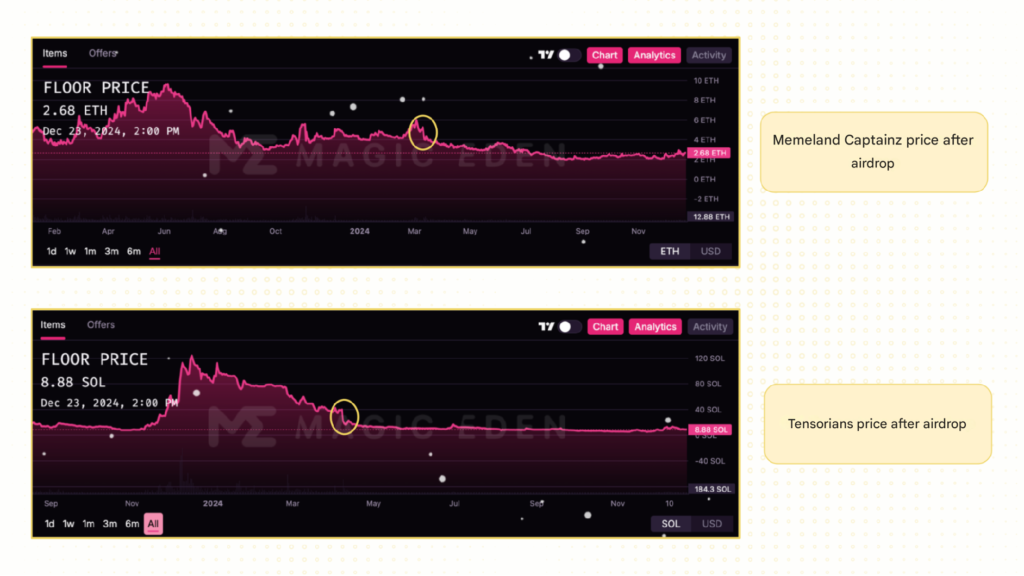
This is a common problem for many NFT projects due to a lack of growth drivers. However, there are exceptions, such as BAYC. The project has experienced over 40% growth despite launching a token and conducting an airdrop for users.
One reason for this growth is that, in addition to the token, BAYC has also developed an ecosystem around its NFTs, including creating its own blockchain. Furthermore, the BAYC brand is quite popular both inside and outside the crypto market.
Another exception is CryptoPunks (despite the project not yet launching a token). This NFT collection has seen incredibly impressive growth, distinct from other NFT projects. The price of CryptoPunks has increased from $50,000 to $150,000 (higher than even the current price of BTC, which is around $100,000).
Derek Edwards, a member of Flaming DAO, explains that CryptoPunks’ growth is due to its lack of influence from external factors: no team, no development plans, no airdrops, purely focused on the aspect of unique NFT images.
This makes CryptoPunks akin to luxury jewelry in Web3, similar to high-end watches or clothing in the real world. Therefore, owning a CryptoPunk implies that an individual is more “fashionable” than the rest.
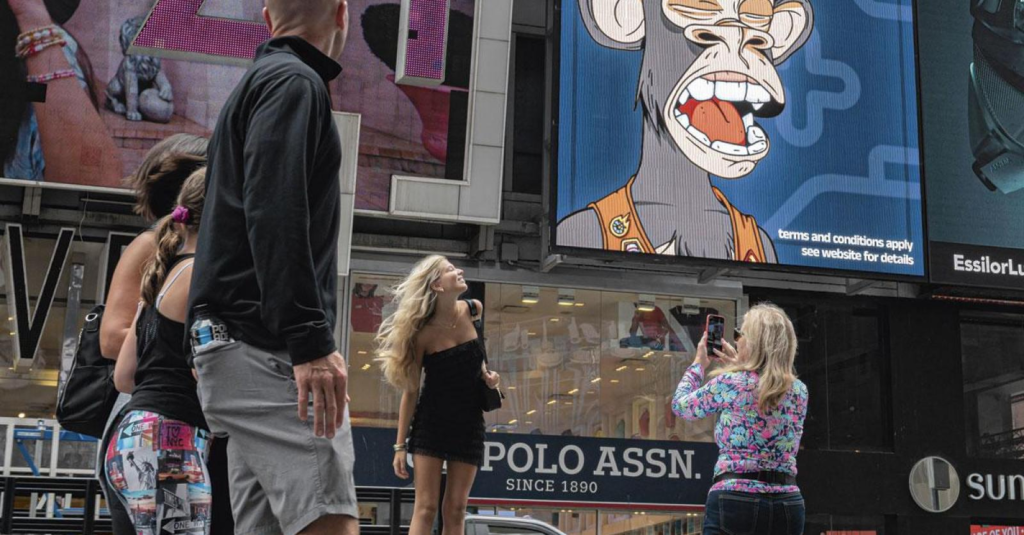
With the success of BAYC and CryptoPunks, some believe that the guiding principle for NFT collections is to focus on building a strong brand image and cultivating a thriving community. However, this is no easy feat – the fact that only a few NFT collections stand out among the many projects in the market is clear evidence.
Currently, many projects have begun expanding their image and network effects. For example, Doodles partnered with McDonald’s to print their images on cups, and Pudgy Penguins collaborated with Fortnite to integrate penguin characters into the game.
“In the next 12 months, a series of projects like Pudgy Penguins, Azuki, and Memeland may no longer be recognized as just NFTs,” Adrian Lai, founder of Newman Group, stated on X.
“Don’t get me wrong, I mean these projects started as NFTs, and this will remain a core element that distinguishes them from other Web2 IPs. However, they are IPs supported and shaped by the community… It can be said that their potential for future development is limitless.”
Read more: If you need a product to assist with tax issues and portfolio management in crypto, check out CoinLedger
